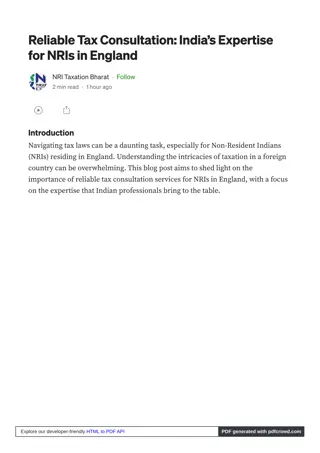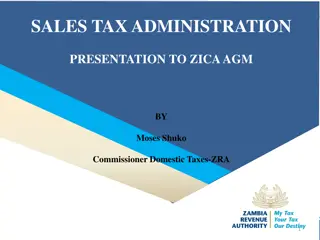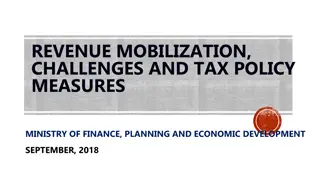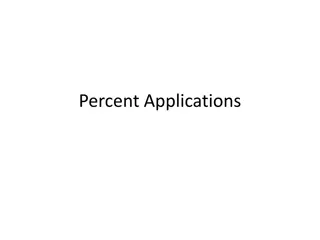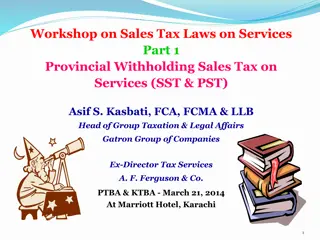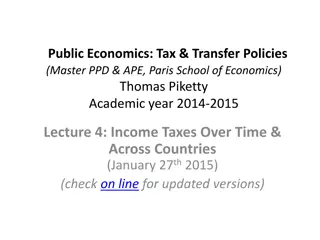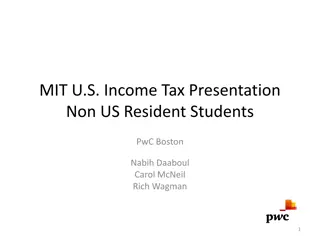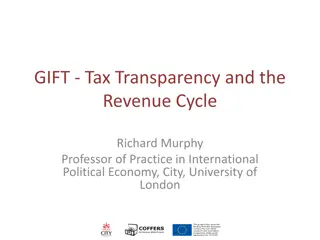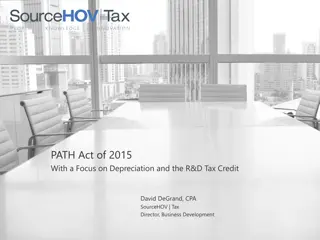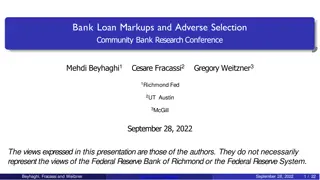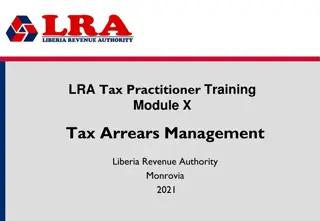
Understanding Tax, Tips, Markups, Discounts, and Interest
Learn how to calculate sales tax, tips, markups, discounts, and interest with step-by-step examples. Understand the concepts and formulas behind these financial calculations to make informed decisions.
Download Presentation

Please find below an Image/Link to download the presentation.
The content on the website is provided AS IS for your information and personal use only. It may not be sold, licensed, or shared on other websites without obtaining consent from the author. Download presentation by click this link. If you encounter any issues during the download, it is possible that the publisher has removed the file from their server.
E N D
Presentation Transcript
Tax, Tips, Markups, Discount, & Interest
Sales Tax *additional amount of money charged on items that people buy Steps: Take the sales tax and change it to a decimal Multiply the decimal by the original price Add the product to the original price
EXAMPLE Drew wants to buy exercise equipment that costs $140. The sales tax is 5.75%. What is the total cost of the equipment? Take 5.75 and turn it into a decimal 5.75% = 0.0575 0.0575 x 140 = 8.05 Take the decimal & multiply it with the original price This is the amount of tax he will pay Take the tax and add it to the original price 8.05 + 140 = $148.05 So, Drew will pay $148.05 for the equipment.
Tips *small amount of money in return for a service Steps: Take the % and change it to a decimal Multiply the decimal with the original cost Add the product to the original cost
EXAMPLE A customer wants to tip 15% on a restaurant bill that is $35. What will be the total bill with tip? Take the % and change it to a decimal 15% = 0.15 Take the decimal and multiply it with the bill 0.15 x 35 = 5.25 This answer is the tip Add the tip to the total bill 5.25 + 35 = $40.25 So, the customer will pay a total of $40.25
EXAMPLE Julie s family goes out to eat. The restaurant automatically added an 18% gratuity to their bill since they are a party of 8. The total bill after the automatic 18% gratuity was $257.80. What was the price of the bill before the 18% gratuity? Let x = original bill So, 0.18x = gratuity x + 0.18x = $257.80 1.18x = 257.80 The price of the bill before gratuity was $218.47. x = 218.47
Markups *When a store sells an item for more than it paid for it Steps: Find the difference between the original and new price Set that up in the is spot and put the original amount in the of spot
EXAMPLE A store pays $56 for a GPS navigation system. They sell it for $89. What is the markup on the GPS as a percentage? 89-56 = 33 33 = x 56 100 56x = 3300 x = 58.9 The markup of the GPS is 59%.
Discount *amount by which the regular price of an item is reduced Steps: Take the % and change it to a decimal Take the decimal and multiply it with the original price Subtract the product from the regular price
EXAMPLE A DVD normally costs $22. This week it is on sale for 25% off. What is the new sales price of the DVD? Take the % and change it to a decimal 25% = 0.25 0.25 x 22 = 5.5 Take the decimal & multiply it with the original This is the discount Take the discount and subtract it from the price 22 5.5 = $16.50 So, the DVD now costs $16.50
Interest *money paid regularly at a particular rate for the use of money borrowed or for money being invested Steps: Use the formula I = PRT P = principal amount borrowed/invested R = interest rate (the %) T = time
EXAMPLE How much interest is earned in 5 years on $3,000 invested at an interest rate of 9% per year? I = PRT x = 3,000(9%)(5) x = 1,350

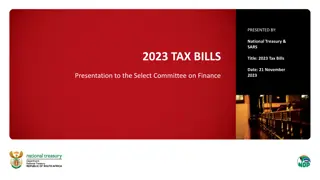

![Town of [Town Name] Real Estate Tax Rates and FY 2024 Budget Summary](/thumb/62211/town-of-town-name-real-estate-tax-rates-and-fy-2024-budget-summary.jpg)

